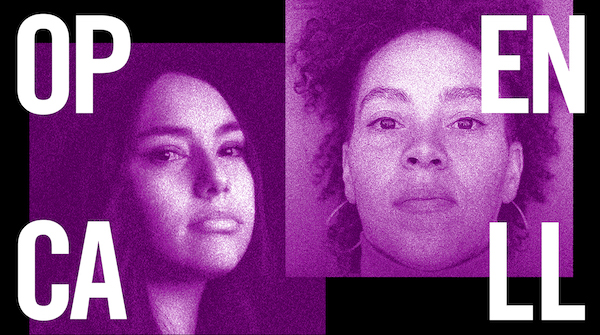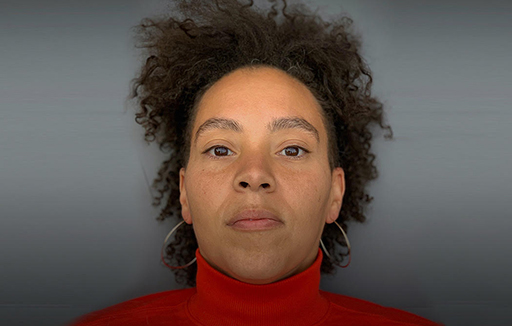
Announcing the 2022 Creative Time Open Call Selected Artists
July 28th, 2022
Creative Time announces Kite and Alisha Wormsley as the artists selected from the 2022 Open Call invitation. The biennial commission, awarded to artists who have yet to realize a major public artwork, was opened beyond the New York tri-state area for the first time this year to artists or artist collectives residing in all 50 states, US territories, and the sovereign tribal nations within US borders. From a pool of over 600 applications, Kite, based in Tulsa, Oklahoma and Montreal, Canada, and Wormsley, based in Pittsburgh, Pennsylvania, were selected by Creative Time staff, headed by Associate Curator Diya Vij, and a selection committee comprised of Kendal Henry, Assistant Commissioner of Public Art, New York City Department of Cultural Affairs; Duke Riley, 2016 Creative Time artist; Kamala Sankaram, 2021 Creative Time Open Call artist; and Nico Wheadon, Independent Curator, Educator, and Writer.
Elaborating on the selection of Kite and Wormsley for the third edition of the Open Call commission, Vij said, “I’m thrilled to be working with both artists, whose project encompasses a range of generative ideas that felt particularly ripe for us to join as collaborators and presenters. Grounded in Indigenous and Black technologies, the work will use dreams as a site for solidifying futures. With its potential to spread across the city, the project offers a necessary discourse on public rest in public space, a dreamy act that is often met with aggression and policing. Kite and Wormsley’s proposal is an exciting blend of risk and possibility that makes it feel right at home at Creative Time.”
For their Open Call project, Kite and Wormsley will explore Black and Indigenous futuring, a practice that asks participants to imagine many generations into the future, ushering forth new possibilities and collaboration. Integrating media, public space, and public interaction, they will design widespread invitations for rest and reimagination rooted in practices within Afro-Futurism and Indigenous Protocol. Each artist brings a deep knowledge through their ongoing engagement with the subject matter, with Kite’s work as a member of The Indigenous Protocol and Artificial Intelligence (A.I.) Working Group and Wormsley’s series, There Are Black People in the Future.
Of the Open Call commission, Kite said, “I’m so excited to be collaborating on co-dreaming a world with Alisha Wormsley and Creative Time. I am grateful to my collaborators and family members who teach me how to listen more deeply and look forward to dreaming collectively over the next year.” Wormsley adds, “We are inspired by our elders and contemporaries who center rest and dreaming and aim to show what can be created when we encourage and share dream space in community.”
Kite and Wormsley’s project challenges the scarcity mentality that defines our flawed present by forefronting ancestral Black and Indigenous technologies that have historically been erased or forbidden. Under the European settlement of North America, the universal expression of dreaming and human need for rest and rejuvenation has historically been criminalized, from the coerced labor of enslaved Africans to governmental sanctioning of Indigenous ceremonies, while the unyielding grind of capitalism has more broadly penalized downtime and respite within American culture. Within this context, these acts emerge today as deeply radical confrontations of the status quo and opportunities to cultivate transformative visions for the future.
About the Artists

Kite aka Suzanne Kite is an Oglála Lakȟóta performance artist, visual artist, and composer raised in Southern California, with a BFA from CalArts in music composition, an MFA from Bard College’s Milton Avery Graduate School, and is a PhD candidate at Concordia University. Kite’s scholarship and practice investigate contemporary Lakota ontologies through research-creation, computational media, and performance. Recently, Kite has been developing a body interface for movement performances, carbon fiber sculptures, immersive video and sound installations, as well as co-running the experimental electronic imprint, Unheard Records. Kite has also published in several journals and magazines, including in The Journal of Design and Science (MIT Press), where the award winning article, “Making Kin with Machines,” co-authored with Jason Lewis, Noelani Arista, and Archer Pechawis, was featured.

Alisha B. Wormsley is an interdisciplinary artist and cultural producer. Her work contributes to the imagining of the future of arts, science, and technology through the Black womxn lens, challenging contemporary views of modern American life through whichever medium she feels is the best form of expression–creating an object, a sculpture, a billboard, performance, or film–and thrives in collaboration. Her work has been exhibited widely, most recently at the Oakland Museum, VCUArts Qatar, Speed Museum, Artpace, Times Square Arts and the Carnegie Museum of Art. Over the last few years, Wormsley has designed several public art initiatives including Streaming Space, a 24 foot pyramid with video and sound installed in Pittsburgh’s downtown, and several park designs. Wormsley created a public program out of her work, There Are Black People In the Future, a global message, which gives mini-grants to open up discourse around displacement and gentrification and was also awarded a fellowship with Monument Lab and the Goethe Institute. In 2020, Wormsley launched an art residency for Black creative mothers called Sibyls Shrine, which has received two years of support from the Heinz Endowments. In 2022, Wormsley was awarded a Guggenheim Fellowship with longtime collaborator Li Harris. An awardee of the Sundance Interdisciplinary grant and the Carol Brown Achievement award, among others, Wormsley has an MFA in Film and Video from Bard College and currently is a Presidential Postdoctoral Research Fellow at Carnegie Mellon University.
